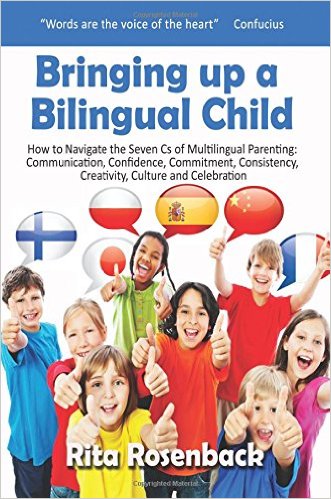Learning a new language is frequently a large part of the experience of being an expat. For adults, this might involve taking some courses before making the move, immersing yourself in the culture once you’re there, and practising until you’re fluent – or at least conversational.
Moving abroad with children presents a whole new set of challenges, however. Not least among these is bringing up your children to speak multiple languages.Most expats will want their children to speak the language of their home country, at least to a conversational level, in order to be able to communicate with people back home. But it is of course also important for children to be able to communicate in the local language of the family’s new country.
How do you juggle more than one language? How do you prioritise? Should one language take precedence over another?
Bringing Up A Bilingual Child is a book by Finnish expat Rita Rosenback which addresses these questions and gives practical help to parents who want their children to speak more than one language.
Currently living in England, Rita has moved several times with her family and has raised two multilingual daughters. With Swedish, Finnish, Punjabi and English all being spoken in the home and in the wider family circle, Rita’s personal experience means that she has an in-depth understanding of just how much of a challenge it is to raise bilingual children.
The book is nicely set out, with quotes at the beginning of each section to motivate the reader and clear paragraphs, bullet points and headers to delineate sections. This makes it an easy read, and also means that navigating to the precise section you need is straightforward.
Bringing Up A Bilingual Child sets the reader up with the “Seven Cs of Multilingual Parenting”, which reappear throughout the book and provide a useful reference point for checking up on progress.
The Seven Cs are: Communication, Confidence, Commitment, Consistency, Creativity, Culture and Celebration.
I won’t go into too much detail about each of them individually – you’ll have to read the book for that! However, it is worth noting that even from the headings themselves it is easy to see that there is a nice balance between celebrating the multilingual family unit, and realism concerning how much commitment and consistency are needed to succeed.
The ‘Confidence’ section is an important one too – Rita discusses how many parents feel that they cannot or should not try to teach their children a language in which they themselves are not fully fluent. The book deals with this and many other concerns of expat parents, and really helps to give the reader confidence that they can be successful in their multilingual endeavours.
If you or your partner are currently undecided about the benefits of bringing up children to speak multiple languages, there is a section in the book devoted to the advantages of being bilingual, which is well worth a read. Towards the end are a few pages dealing with what to say to friends or family members who are unsupportive or who inadvertently make things harder.
One thing I particularly enjoyed about the book was its balanced way of outlining everything, from processes to worries and challenges. Rita herself used the One Parent, One Language method to ensure that her children were able to speak both Punjabi and Finnish, but other methods are also outlined and treated fairly – there is no “my way is the only way” feeling, which can be especially prevalent in literature about bringing up children.
Even in the discussion of whether you should teach your children multiple languages at all, there is a good amount of balance. The book sets out various question and answer scenarios which allow the reader to come to their own conclusions and decide what is ultimately best for their family.
Interspersed throughout the book are examples from Rita’s own life. Whilst not necessarily universally applicable, it is no doubt very helpful to see the background of a successfully multilingual family. Rita is open and honest about some of the struggles they encountered along the way, which will serve to encourage parents who are finding the whole process challenging.
At the end of the book is a set of exercises to help you get started in teaching your children to speak multiple languages. This is supplemented by a list of encouraging thoughts for parents who want to bring up bilingual children, and several pages on which you can write down your motivations and experiences, and chart your family’s progress.
In summary, Bringing Up A Bilingual Child is an excellent resource for expat parents, and I have no doubt that this book will be useful to anyone who wants to bring up their children to speak more than one language.
Bringing Up A Bilingual Child costs £15 / €20 / $25 and can be purchased on Amazon.
You can keep up to date with Rita's experiences and advice on her site, Multilingual Parenting.

